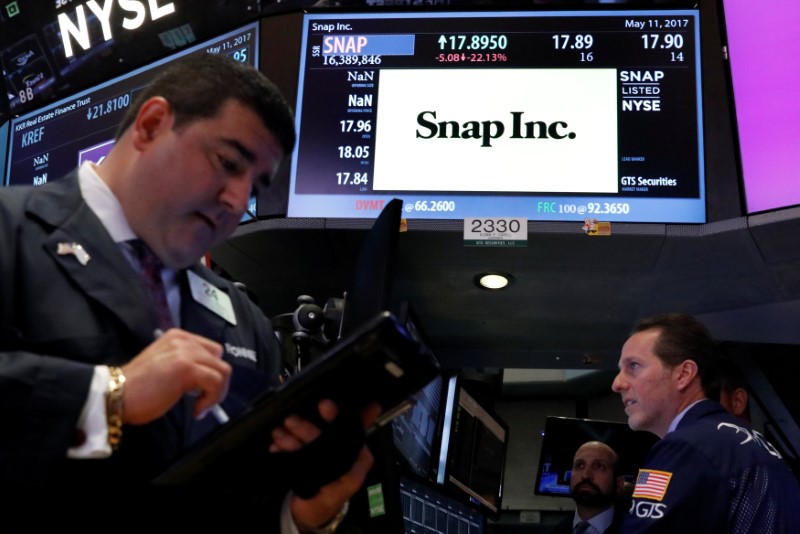On Friday, Piper Sandler adjusted its outlook on Snap Inc (NYSE:NYSE:SNAP), reducing the stock price target to $12 from the previous $15 while maintaining a Neutral rating on the stock. The adjustment follows a post-market drop in Snap's shares of over 16% as the company's revenue growth of 16% year-over-year fell short of market expectations and marked a deceleration from the first quarter of 2024.
The analyst noted that while direct response (DR) advertising revenue remained steady throughout the quarter, there was a significant slowdown in brand advertising, particularly from the retail and technology sectors compared to the first quarter of 2024. Despite the integration of the Customer API (CAPI) and the addition of new advertisers, these factors have not led to an acceleration in revenue for Snap.
The commentary from Piper Sandler highlighted the mixed performance in Snap's margins. Following a revision of estimates that pointed downwards, the firm decided to lower the price target for Snap's shares. The firm reiterated its neutral stance on the stock, indicating a cautious outlook without a clear positive or negative recommendation.
The revised price target and the maintained Neutral rating reflect the firm's assessment of Snap's current financial health and market position. Snap's recent performance seems to have influenced the firm's decision, as it balances the steady growth in certain advertising revenues against the more pronounced slowdown in others, alongside an unimpressive margin landscape.
In other recent news, Snap Inc. has experienced a series of developments. The company's second-quarter earnings did not meet market expectations, prompting JPMorgan and Piper Sandler to reduce their price targets for Snap's shares to $11.00 and $12.00 respectively. Despite steady growth in direct response advertising revenue and the addition of new advertisers, Snap's revenue growth of 16% year-over-year fell short of market expectations.
The company also reported a revenue of $1.24 billion for the second quarter, slightly below analysts' projections, and anticipates a weaker-than-expected revenue for the current quarter. Amid these developments, Benchmark maintained a Hold rating on Snap stock, citing concerns about the company's ability to meet near-term consensus expectations.
Snap's initiatives to engage small and medium-sized businesses have resulted in a doubling of the active advertiser count year-over-year, and the expansion of revenue streams through Snap+, which now boasts over 11 million subscribers, was noted as a positive development.
Morgan Stanley upgraded Snap stock from Underweight to Equalweight and increased the price target to $16.00, reflecting an assessment of Snap's improving advertising business performance. BMO Capital Markets also raised Snap's advertising revenue and EBITDA forecasts due to successful iOS platform updates and anticipated shifts in advertising expenditures.
Lastly, Snap expressed support for the Kids Online Safety Act (KOSA), a proposed legislation aimed at establishing a clear "duty of care" for social media companies regarding the use of their platforms by minors. These are among the recent developments for Snap as it navigates the evolving digital advertising landscape.
InvestingPro Insights
In light of Piper Sandler's recent price target adjustment for Snap Inc (NYSE:SNAP), real-time data from InvestingPro provides additional context for investors considering the stock's current position. With a market capitalization of $21.11 billion, Snap's financial health is under scrutiny, especially given its negative P/E ratio of -16.06, indicating the market's concerns about profitability. The company's Price / Book ratio, as of the last twelve months leading up to Q1 2024, stands at a high 9.9, suggesting a premium valuation compared to its book value.
Despite the stock's poor performance over the last month, with a 21.22% decline, InvestingPro Tips note that Snap's liquid assets exceed its short-term obligations, providing some financial flexibility. Moreover, analysts predict the company will turn profitable this year, offering a potential upside for investors. However, it's important to note that Snap does not pay a dividend, which may influence the investment decisions of income-focused shareholders.
For those seeking more detailed analysis, there are additional InvestingPro Tips available that further explore Snap's financial metrics and market potential. For comprehensive insights and metrics, interested readers can explore the full suite of tips on InvestingPro.
This article was generated with the support of AI and reviewed by an editor. For more information see our T&C.
